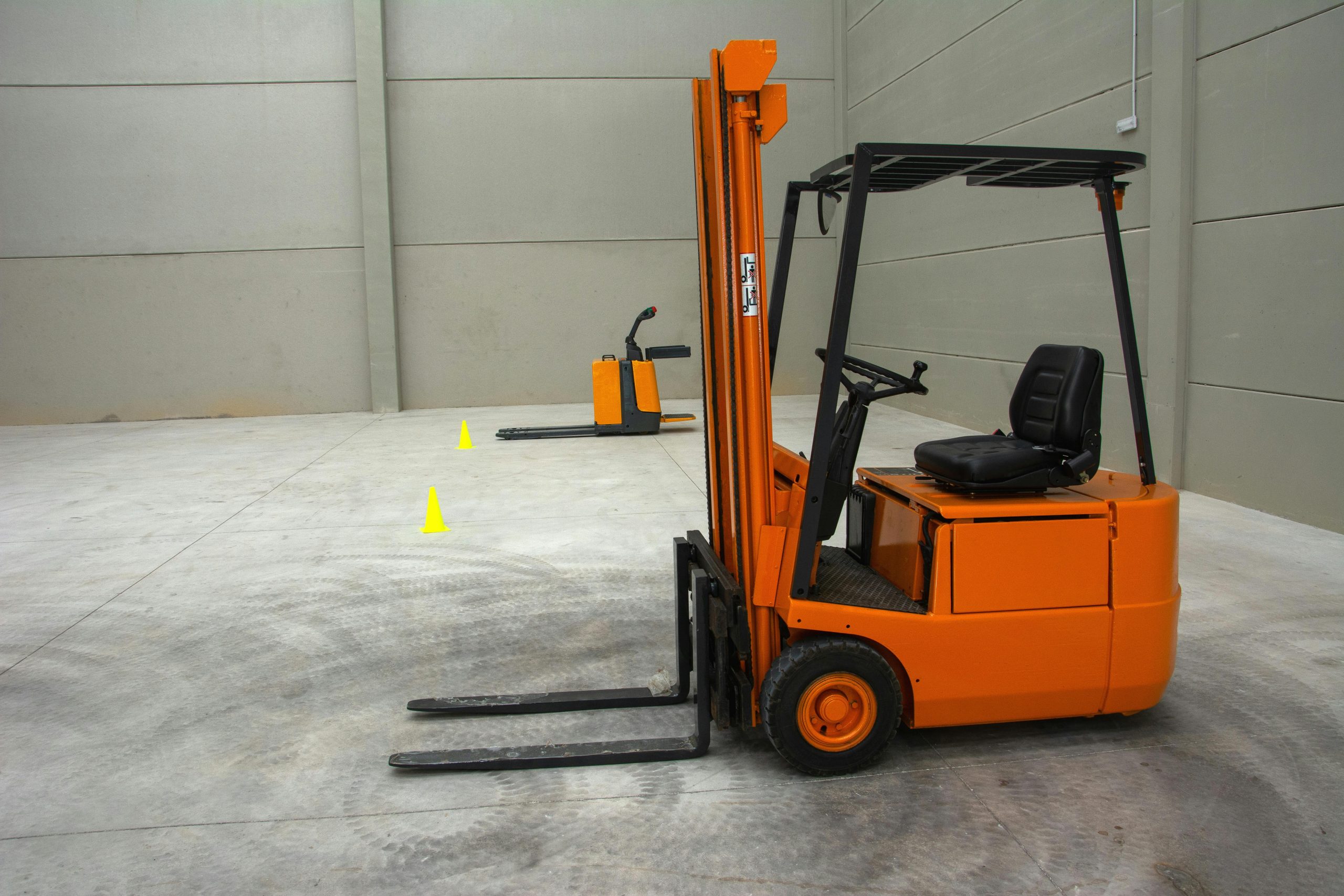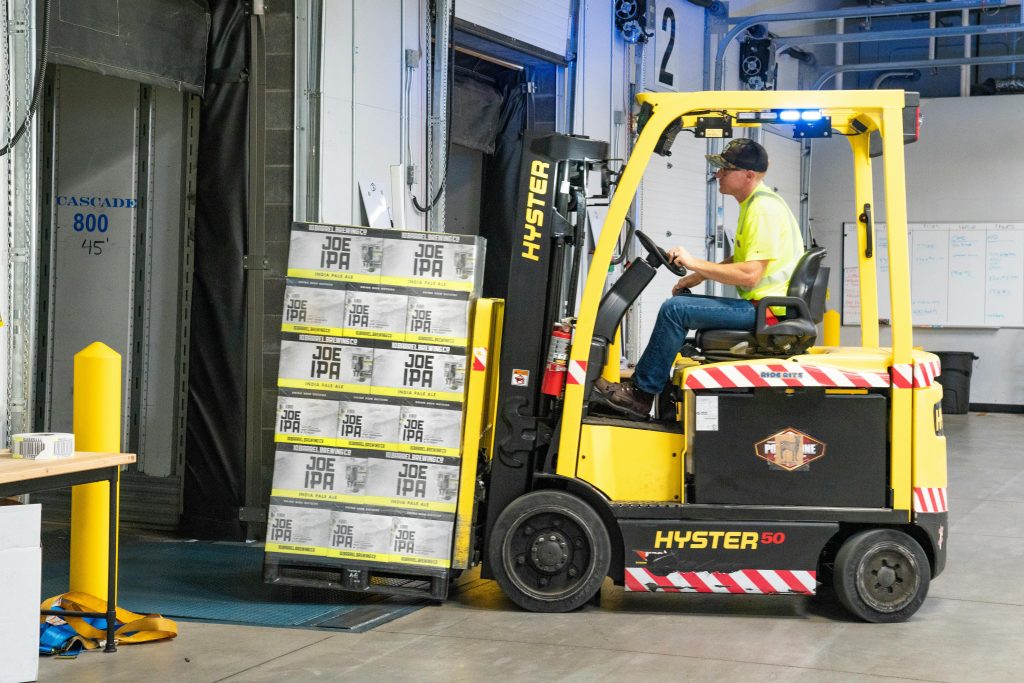- Forklift batteries require regular visual inspections to detect potential damage early.
- Proper charging practices like avoiding overcharging help prolong battery lifespan.
- Maintaining optimal operating temperatures is crucial for maximizing battery performance.
- Proper handling during installation and storage prevents damage to forklift batteries.
- Documented inspections and scheduled maintenance ensure timely servicing and optimal performance.
A forklift is an indispensable equipment in warehouses, distribution centers, and manufacturing facilities, facilitating the movement of heavy goods with ease, especially in advanced countries like Singapore and Japan. However, the efficiency and effectiveness of forklifts heavily rely on their batteries. Forklift batteries are expensive investments, and proper maintenance is crucial to maximize their lifespan and performance. This article will delve into five essential maintenance tips to ensure your forklift batteries operate at their best, saving you both time and money in the long run.
1. Regular Inspections
Regular inspections are the cornerstone of forklift battery maintenance, allowing you to catch potential issues early on before they escalate into costly problems.
Visual Inspection
Visual inspection is the first line of defense against battery damage. Take the time to visually inspect the battery regularly for any signs of wear and tear, such as leaks, cracks, or corrosion on the casing. Additionally, examine the cables and connections for any signs of fraying or looseness, as these can impede the flow of electricity and affect battery performance. Addressing any visible issues promptly can prevent further damage and ensure the continued reliability of the battery.
Water Levels
Checking the water levels in the battery cells should be a routine part of your maintenance schedule. Low water levels can lead to decreased performance and irreversible damage to the battery. Ensure the water level covers the plates adequately, but avoid overfilling to prevent spillage. Use distilled water to top up the cells, as impurities in tap water can lead to corrosion and other issues. Regularly monitoring and maintaining proper water levels is essential for preserving the integrity and longevity of the battery.
2. Proper Charging Practices
Proper charging practices are vital for maintaining the health and longevity of forklift batteries, preventing overcharging, and ensuring optimal performance.
Avoid Overcharging
Overcharging is one of the most common causes of premature battery failure. Invest in smart chargers equipped with automatic shut-off features to prevent overcharging and prolong the lifespan of your batteries. These chargers are designed to detect when the battery reaches full capacity and automatically stop the charging process, preventing excessive heat buildup and minimizing stress on the battery cells. Implementing proper charging practices not only extends the lifespan of the battery but also reduces energy consumption and operational costs.
Equalizing Charges
Periodic equalization charges help balance the cells within the battery, ensuring consistent performance across all cells. Follow manufacturer guidelines on how often to perform equalization, typically recommended every 5 to 10 charge cycles. During equalization, the charger applies a controlled overcharge to the battery, allowing each cell to reach the same state of charge. This process helps prevent uneven wear and extends the overall lifespan of the battery. However, it’s essential to perform equalization charges carefully and according to the manufacturer’s instructions to avoid overcharging or damaging the battery.

3. Temperature Control
Maintaining optimal operating temperatures is essential for maximizing the lifespan and performance of forklift batteries, as extreme temperatures can adversely affect battery health.
Optimal Operating Temperature
Forklift batteries perform best within a specific temperature range. Extreme heat or cold can diminish battery performance and shorten lifespan. Ensure the battery storage and charging area are properly ventilated and insulated to regulate temperature. During hot weather, provide shade or additional cooling to prevent overheating, while in cold weather, consider using battery blankets or heaters to maintain a consistent temperature. By controlling the battery’s operating temperature, you can significantly improve its efficiency and longevity, reducing the risk of premature failure and costly replacements.
Battery Room Conditions
Creating suitable conditions in the battery charging area is crucial for prolonging battery lifespan. Keep the charging area clean and well-ventilated to prevent dust, dirt, or moisture buildup, which can accelerate corrosion and damage to the batteries. Regularly inspect and clean the battery terminals and connectors to ensure a secure and efficient electrical connection. Additionally, consider implementing temperature monitoring systems to alert you to any fluctuations requiring intervention. By maintaining optimal battery room conditions, you can ensure consistent performance and prolong the lifespan of your forklift batteries.
4. Handling and Storage
Proper handling and storage practices are essential for preventing damage to forklift batteries during installation, removal, and when not in use.
Proper Handling
Train forklift operators on proper battery handling procedures to minimize the risk of damage during installation and removal. Utilize appropriate lifting equipment and ensure batteries are securely fastened to prevent accidents. Avoid dropping or mishandling batteries, as this can cause internal damage and compromise performance. Additionally, implement regular training and refresher courses to reinforce safe handling practices and minimize the risk of workplace accidents. By prioritizing proper handling techniques, you can protect your investment and ensure the longevity of your forklift batteries.
Correct Storage Conditions
When batteries are not in use, store them in a cool, dry place without too much sunlight or extreme temperatures. Don’t place heavy objects on top of batteries, as this can cause damage to the casing and internal components. Consider investing in battery racks or storage containers to keep batteries organized and protected from accidental damage. Furthermore, periodically inspect stored batteries for any signs of deterioration or corrosion and address any issues promptly. By storing batteries correctly, you can extend their lifespan and maintain optimal performance, ensuring reliable operation when needed.
5. Maintenance Records and Tracking

Maintaining accurate records and tracking maintenance activities is crucial for identifying trends, tracking performance, and ensuring timely servicing.
Documented Inspections
Keep detailed records of all battery inspections, maintenance activities, and repairs. This documentation helps track the battery’s performance over time and identify any recurring issues that need attention. Note any abnormalities or concerns observed during inspections, as well as any corrective actions taken. By documenting inspections, you can establish a comprehensive maintenance history for each battery, enabling you to make informed decisions regarding repair or replacement.
Scheduled Maintenance
Implement a regular maintenance schedule based on manufacturer recommendations and usage patterns. Scheduled maintenance ensures timely servicing and helps prevent unexpected breakdowns. Perform routine tasks such as cleaning terminals, checking connections, and testing voltage and electrolyte levels according to the established schedule. Additionally, schedule periodic professional inspections and battery tests to identify any underlying issues that may require attention. By adhering to a structured maintenance schedule, you can minimize downtime, extend battery lifespan, and optimize overall forklift performance.
Proper maintenance of forklift batteries is essential for maximizing their lifespan and performance, ultimately saving time and money for businesses. By following these five maintenance tips – regular inspections, proper charging practices, temperature control, handling and storage guidelines, and maintaining accurate maintenance records – you can ensure your forklift batteries operate efficiently and reliably for years to come. Remember, proactive maintenance is key to avoiding costly repairs and replacements down the line.

